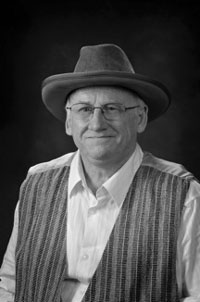
Recently I found an example of a Virginia family that went to great lengths in following this old naming tradition. They had six children. The eldest daughter was named after her fatherís mother and her fatherís sister. The eldest son was named after his motherís father. The second son was named after his fatherís father.
The second daughter was named after her mother and her motherís mother. The third son was named after his motherís brother (who had been named after their grandfather). The third daughter was named after her fatherís sister and her motherís sister.
That takes care of one generation, with lots of given names repeated. Letís see how the tradition fared, as these six named their children. The eldest daughter, like her parents, had six children. Her eldest son was named after his two grandfathers. Her second son was named after his father, with his motherís surname. Oldest daughter named after her mother and her motherís mother.
Third son named after his motherís brother and one of his great-grandfathers. Second daughter named after her motherís sister and two of motherís aunts (one maternal, the other paternal).
Third daughter named after her motherís sister, her motherís mother and her motherís grandmother (three given names). That covers the six children of the eldest daughter, who had been the first-born of her parents.
Two of the first coupleís sons never married, so nothing to report there. Their second daughter had four children. Her eldest daughter was named after her motherís sister and two of motherís aunts (maternal and paternal).
The second daughterís one and only son was named after his father. Her second daughter was named after her motherís sister, her motherís mother and her great-grandmother. Her third daughter was named after her fatherís sister. So the tradition continues.
The original coupleís third son had only one child, a son, who was named after his father, his great uncle (paternal side), and also given the surname of his grandmother (paternal). As an only child, he had to carry a long name in order to fulfill a tradition.
Now I realize this has become very complicated but we are almost done, and you are able to get the drift, which is more important than the specific details. Anyway, it gets easier.
The third daughter of the original couple had six children, like her parents, but the naming was much simpler. Her eldest son was given an outlandish name (one having no linkage with the previous tradition). Her second son was named after his motherís brother and her grandfather.
Her third son was given an outlandish name. Her only daughter was named after her mother and two of her motherís aunts (maternal and paternal). Her fourth and fifth sons were given outlandish names. End of the naming in generation two.
The kicker is that in these families everybody had a nickname. Maybe that was to avoid the confusion that might have resulted from so many duplicated names between the generations.
A retired English professor, Dr. Jerry Lincecum teaches classes for older adults who want to write their life stories. He welcomes your reminiscences on any topic: jlincecum@me.com